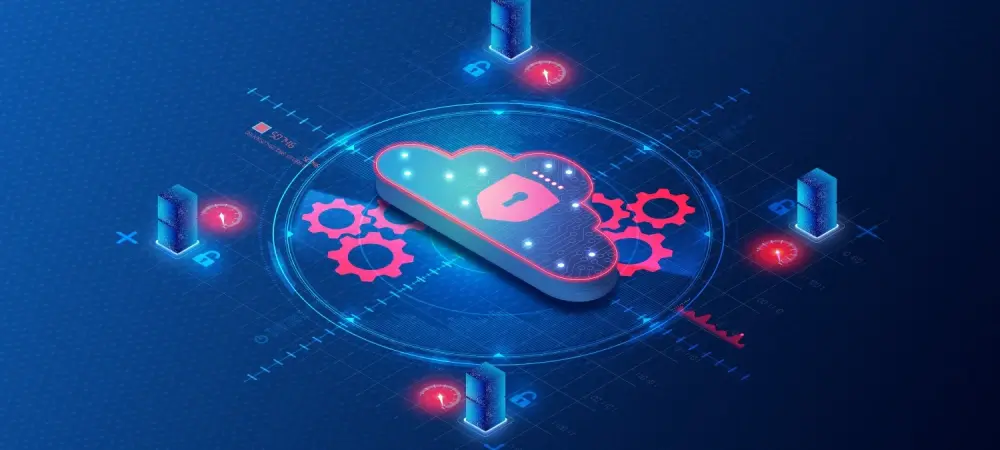As the digital landscape rapidly evolves, the cloud has become an integral component of organizational infrastructure, yet it remains riddled with security challenges. A recent report from Tenable Research highlights persistent issues plaguing businesses due to inadequate cloud security measures. With the proliferation of cloud-based and AI-driven resources, the report details how various risky practices and configurations contribute to vulnerabilities. It reflects on data from global cloud systems, revealing several alarming trends that demand attention.
The Depth of Data Exposure
Mismanagement and Data Sensitivity
In examining the state of global cloud systems, a critical concern has been the exposure of sensitive data due to poor security management. The report identifies that 9% of publicly accessible cloud storage contains sensitive material, with an astounding 97% of it classified as restricted or confidential. Such statistics underscore the urgency of re-evaluating current data security protocols. Misconfigurations contribute significantly to this issue, as does the unsafe storage of critical information like passwords and API keys. These practices not only heighten the risk of data breaches but also compromise the integrity and trustworthiness of cloud services relied upon by many organizations.
Across various cloud platforms, including AWS Elastic Container Service, GCP Cloud Run, and Microsoft Azure, a prevalent vulnerability is noted in the way sensitive information is stored. More than half of organizations surveyed are storing crucial data directly within task definitions on these platforms, posing a severe risk of cyberattacks. The insecure storage of secrets within resources and workflows remains a common issue, showcasing a wide gap in secure data management practices that need immediate rectification. The report emphasizes the need for organizations to develop strategies that focus on securing access and protection of their sensitive resources.
The Toxic Cloud Trilogy
Misconfigurations rank high among the culprits weakening cloud security, as evidenced by the so-called “toxic cloud trilogy,” which includes open storage servers, exposed database services, and unpatched systems. Despite a slight reduction in their prevalence from a previous rate of 38% to 29%, these issues remain a formidable threat. Exploitable misconfigurations are often a byproduct of human error, where improper setups occur due to negligent or poorly executed cloud architecture planning.
Another significant vulnerability involves identity-based threats, often associated with the misuse of Identity Providers (IdPs) and excessive default permissions. Mismanagement in the configuration of these identity systems facilitates unauthorized access, leading to data breaches and unauthorized data alterations. Organizations must tighten their identity management practices and reassess their current configurations, ensuring that access permissions are not granted excessively or without proper oversight.
Strengthening Security Practices
Proactive Measures for Risk Management
It is crucial for organizations to pivot towards proactive security measures to effectively manage and mitigate cloud-based threats. The recommendations in the report advocate for a comprehensive understanding and visibility of cloud environments. By fostering an intimate knowledge of their infrastructure, companies can better anticipate where vulnerabilities lie and preemptively address them. Continuous risk management allows for the proactive identification of risks before they are exploited, while automated remediation processes serve to streamline the correction of any discovered security lapses.
Implementation of continuous monitoring tools facilitates the detection of any potentially harmful activities, thereby reducing the window of opportunity for cybercriminals. Automating certain security processes further enhances this dynamic by eliminating the human error aspect, which often occurs in manual configurations and management. Incorporating these practices aids in forging an ecosystem where risks are systematically and efficiently mitigated.
Shifting the Focus to Prevention
The emphasis on preventative measures is crucial as reliance on cloud and AI resources increases. An approach rooted in prevention rather than reactionary tactics ensures that security practices are not only robust but also scalable to accommodate evolving threats. The report underlines the necessity of unified cloud exposure management strategies, which focus on holistic risk assessment and fortification across all cloud platforms employed by an organization. By moving towards a strategy that preempts issues rather than responding to them post-incident, organizations can better secure their data. A strategic shift towards enhanced scrutiny in security practices also breeds an organizational culture focused on security and risk minimization. Ongoing education and training initiatives within organizations empower employees at every level to recognize potential threats and understand the importance of following robust security protocols. This collective responsibility towards cloud security is instrumental in enhancing an organization’s overall security posture.
Looking Forward
As the digital landscape continues to transform at an incredible pace, the cloud has become a crucial part of how organizations structure their infrastructure. However, it brings with it a host of security challenges that cannot be overlooked. A recent study by Tenable Research exposes ongoing issues that businesses face because of weak cloud security measures. With the growing use of cloud-based and AI-driven tools, the report highlights how several risky practices, along with poor configurations, play significant roles in creating vulnerabilities. The study examines international cloud systems and uncovers several unsettling trends that urgently need to be addressed. These issues range from misconfigured settings to inadequate monitoring and response strategies, all of which contribute to potential data breaches and security threats. As organizations increasingly rely on cloud technologies, ensuring robust security protocols is not just advisable but imperative for maintaining the integrity and confidentiality of sensitive information in this ever-evolving digital age.

